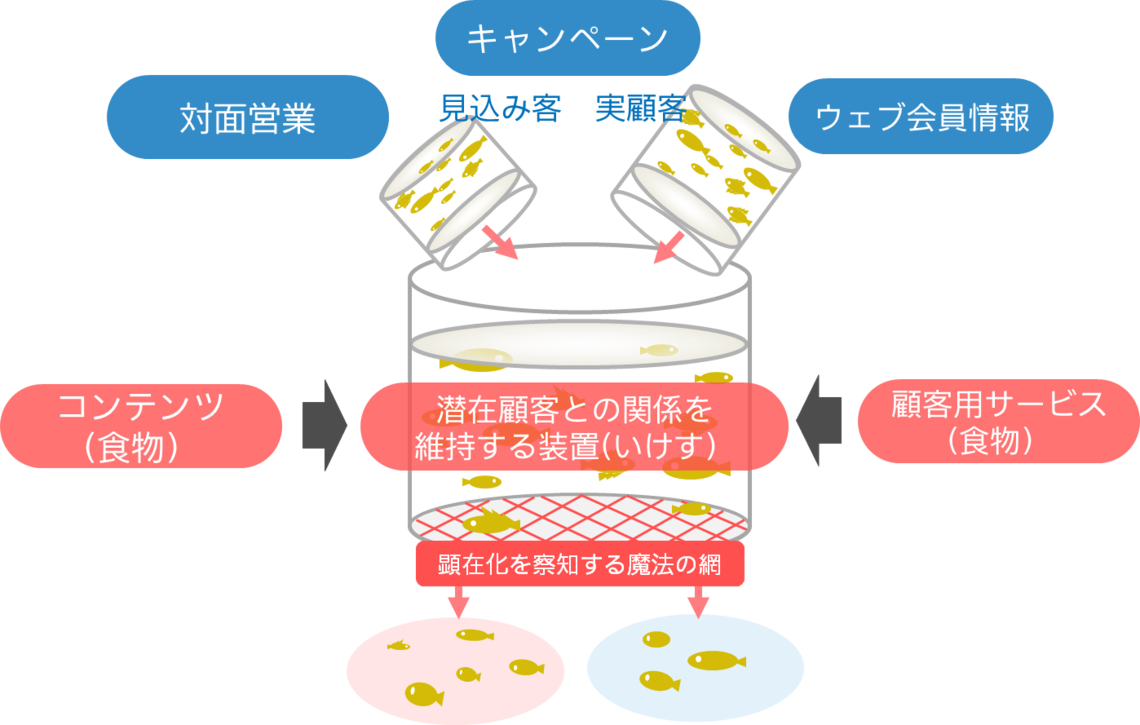This series primarily explains digital marketing innovation for companies providing broad services to consumers. This time, I'd like to discuss digital marketing within media companies. Media companies primarily have two types of businesses. The first is B2C business, where they provide information and content as a broad service to consumers, similar to other companies. The second is B2B business, where they support client companies sponsoring the media company to sell more of their products and services. Particularly in the second business, they provide solutions to solve clients' business challenges in collaboration with advertising agencies.
Who Owns the Content Fans?
The reason I chose digital marketing for media companies as this topic is because I believe that by embracing digital marketing, media companies can significantly enhance the value they provide to their sponsor companies. Additionally, I've recently heard concerns from clients and media professionals questioning the traditional sponsorship model where ads are simply placed within content. I often refer to this challenge as the "Who Owns the Content Fans?" problem.
I believe clients' marketing challenges shouldn't be solved solely through advertising tactics. Especially for durable goods or high-value products, consumers don't purchase the moment they recognize the brand through ads. These are products that don't become personally relevant until a specific life stage or event occurs.
Take insurance services, for example. Consumers who repeatedly see ads but rarely consider enrollment often start seriously thinking about insurance when life stages change—like getting a job, marrying, or having children. This highlights the need for mechanisms and triggers across all marketing efforts to sense each consumer's individual timing. I believe this principle applies equally to content-based marketing services provided by media companies.
When thinking about such mechanisms or triggers, I often bring up the analogy of a "fish pond." Looking it up on Wikipedia, it's defined as "a facility for temporarily keeping caught fish and shellfish until they are sold or consumed" (as of July 12th). In this analogy, management tools like DMPs and MA are the "fish tanks," content is the "food," and consumers are the "fish" (please forgive the analogy, as clarity is prioritized). In this context, it means "a device that continuously provides content to fans who come seeking it, maintaining the relationship, while also detecting and serving those fans when the right moment arrives."
We believe that how to institutionalize these functions of "cultivation" and "detection" within the framework of content provision will be crucial for media companies' content delivery businesses going forward.
Cultivating content fans and sensing the right timing.
So, how exactly should we cultivate content fans and detect the right timing? I believe there are two primary approaches. The first is where the media company cultivates and detects. The second is where the client company cultivates and detects. Or perhaps a combination of both could also be possible.
Here, I'd like to introduce one initiative that seems to offer significant insight when considering the first approach. A recent announcement from AllAbout (AllAbout Launches Initiative to Maximize Promotion Effectiveness by Integrating Marketing Automation into Native Advertising ~ Leveraging AllAbout's Audience Data and Content to Support End-to-End Marketing from Customer Acquisition and Cultivation to CRM ~) represents a highly novel value proposition for media companies.
Traditionally, media companies primarily offered single-point solutions like advertising to increase consumer interest in client services. However, this initiative represents a new value proposition: nurturing the large pool of potential customers (already identified as such for the client) that media companies hold through their own content, detecting when these prospects become ready, and then directing them to the client company.
Using the insurance example again, it might be more efficient for a media company—positioned as a third party—to nurture interest in insurance among its own potential customers using its diverse existing content, rather than insurance companies spending on nurturing interest among their own potential customers using their own content.
The approach I actually implemented was the second method mentioned above.
One company sponsored powerful content and built a list of potential customers by running campaigns leveraging that content. However, since these members registered specifically for that content, any mention of the company's own services caused mass cancellations. They struggled with how to properly evaluate the cost of using that content to retain members.
The solution implemented was to maintain relationships with content fan members within a dedicated "tank" by providing the content as bait, while completely avoiding any mention of the company's own services. However, this tank was equipped with a "magic net" that could detect members' life stage changes in real-time. This net allowed the company to pick out only those members who were ready to purchase its services at that exact moment and send them tailored announcements aligned with their changes. This concept is illustrated below. Regarding the specific method of the "magic net that detects customer changes," I would prefer to explain that directly.
Returning to the topic of content provision, I believe the true value proposition for future content businesses will lie in a concrete system where media companies nurture potential customers gathered as content fans, detect the optimal timing for selling sponsor services, and then drive traffic to those services.
The next installment will be the final part of this series (Digital Marketing Beyond Advertising). Over six parts, we've introduced initiatives by advertising agencies in digital marketing, primarily focusing on areas beyond advertising. While these initiatives may appear independent, they are all part of a framework that processes the considerations necessary for designing a company's digital transformation. Next time, I'll organize all the frameworks introduced based on this process.





